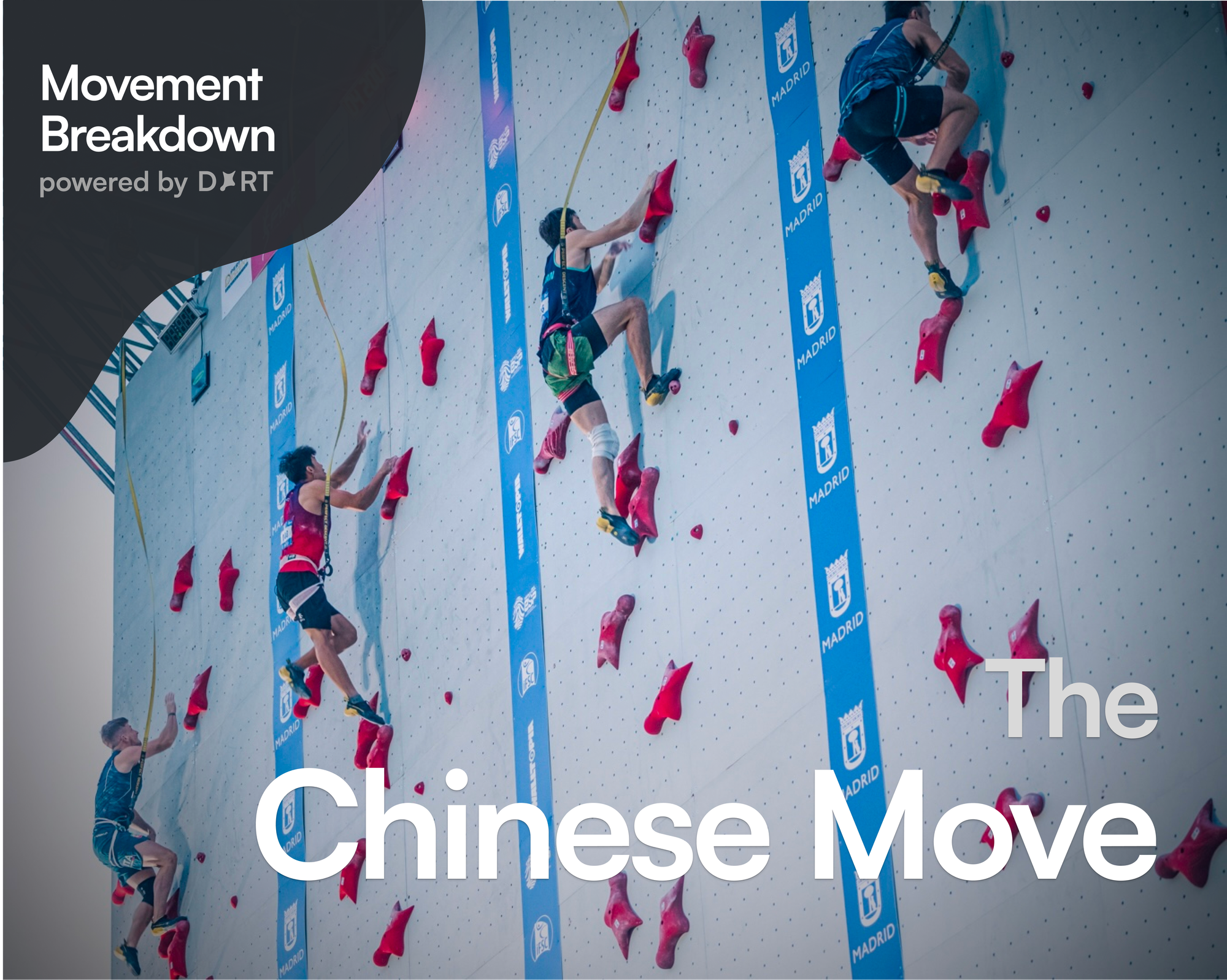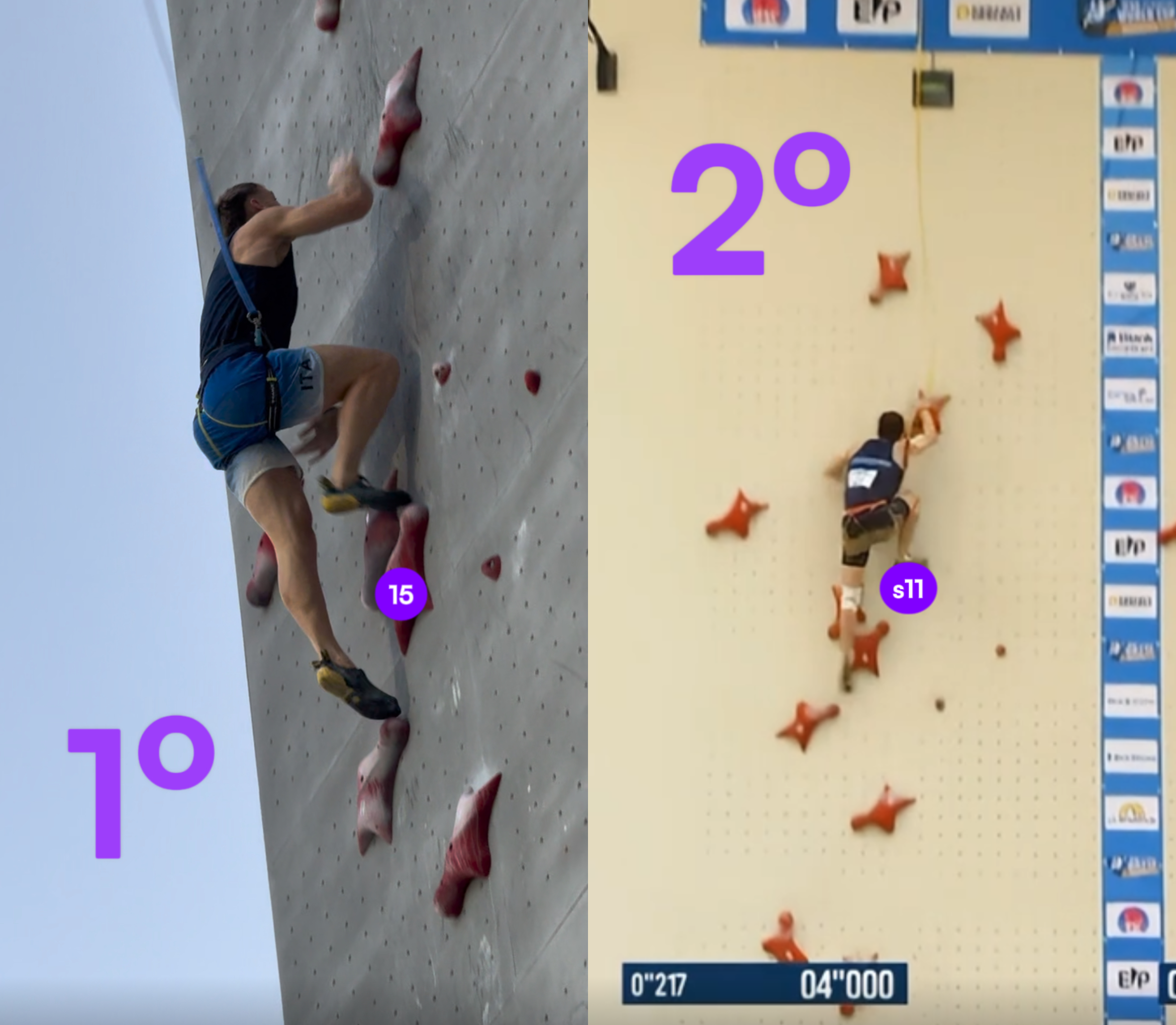Movement Breakdown: The Chinese Move
A deep dive into the functioning of this powerful and demanding move.

The Chinese Move has revolutionized the speed climbing world, introducing a dynamic and technical element that challenges even the most experienced climbers.
Despite its noticeable impact, this move remains one of the hardest to fully master. Therefore, today we'll go over the origins of this move, the reasons behind its difficulty and how to optimize it!
Why Is the Chinese Move So Hard?
So, we were saying that this move is hard to master, but why? The main reason is that it has a significant air time with little opportunity to stabilize the position, this makes coordination and precision abilities crucial. If you don't remember the exact moves we have an article in which we introduce the Chinese Move.
Moving on, another major problem is managing the horizontal forces generated while transitioning through holds 13 or 14 to hold 16. Unlike other sections of the route where horizontal forces can dissipate naturally, this move’s length and low stability, amplify any errors. Starting badly almost guarantees a problematic finish.
Two Main Techniques
There are two main approaches to the Chinese Move which essentially differ in where do you place the foot.
- Left foot on 14, right on 15 and jump to push left foot into the wall.
- Left foot on 14 and then jump with right foot to the small hold 11 (Actually less used in high-level competitions, but an appropiate way to begin)

So how should I manage both the horizontal and vertical forces effectively? Let's dive into the first method that is more technically demanding.
Optimizing the 14-to-15-Step Technique
First of all, we have to manage the approach point to hold 16, we have to organize ourselves in the previous moves to go through hold number 16 from vertical to slightly right at the end of the move. It usually happens that coming from hold 13 or 13-14, we finish the move with our shoulders oriented to the right, in this way, when we load with our arm hold 16 we unintentionally change our body position from right to left, to change it again to the right to reach hold 18. This creates a vicious cycle of rotational instability, making it difficult to mantain control.
Easy solution, using the foot 11.
Yes, as easy as it sound this variation gives you the opportunity to stop the rotation and start again from a semi-neutral position, this can give you much more stability to manage the last two steps.
From here once you've finished the pull at hold 16 you have to only gently touch hold 18 and continue to hold 20 to keep as much a possible your vertical line through out the finish button.
Trying to manage the position of the smear near the hold 18 without putting effort to manage the forces at hold 16 won't help you in the long run and will make your finish inconsistent.
The last (and hard) pull
When you think you're almost there you encounter the final test of strength and control: pulling at hold 20.
Here pinch strength is vital to pull hard with your arm and so, training with a pinch block and never forget some RFD (Rate of Force Development) training on the specific grip can help you quite a lot for that last move!
To resume, the Chinese Move is one of the most demanding moves both physically and technically. But since it come to action it has revolutionized the upper stage technique. Stay tuned for more technical articles coming soon and feel free to comment below your thoughts and ideas about this groundbreaking step.
